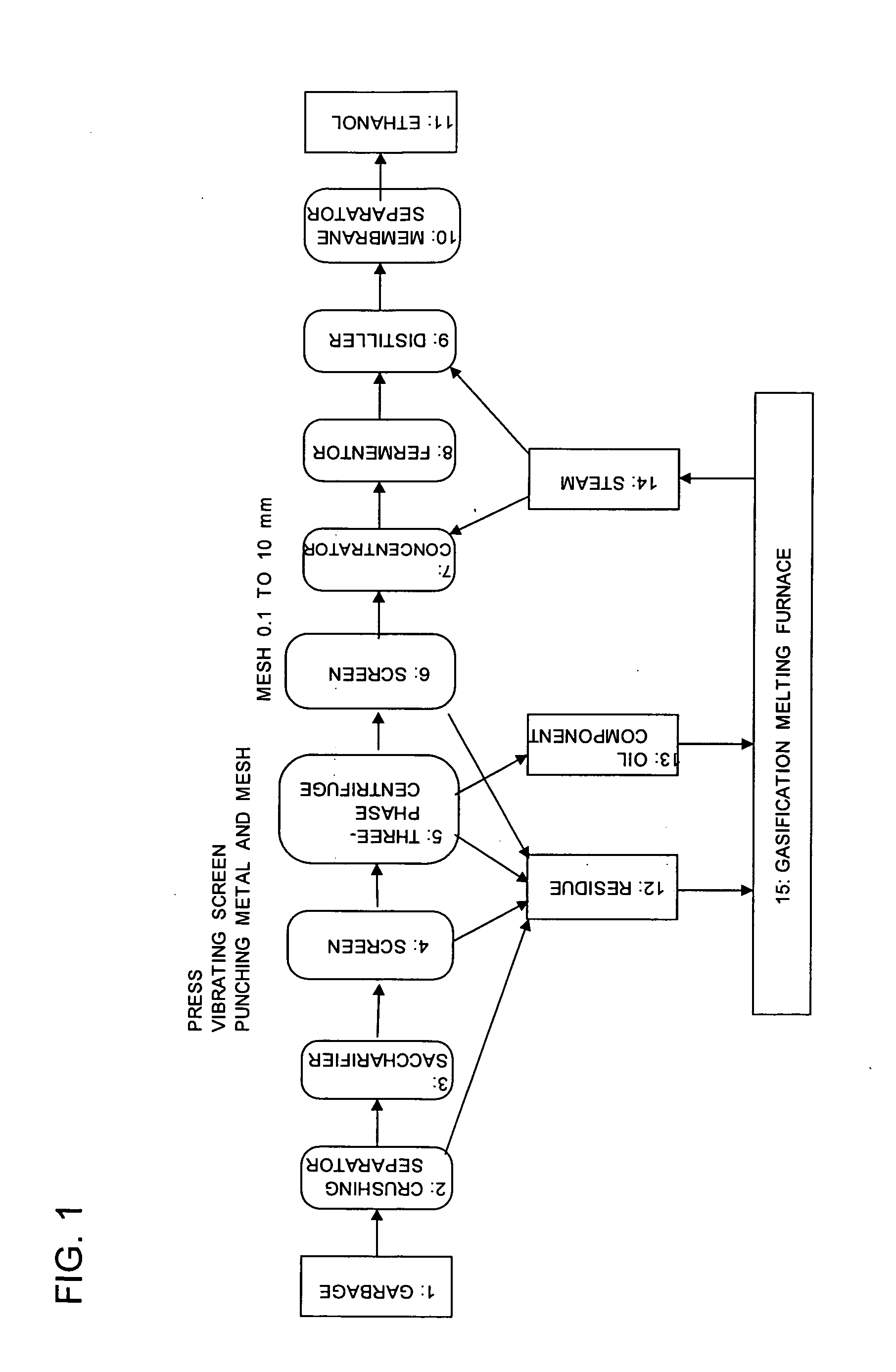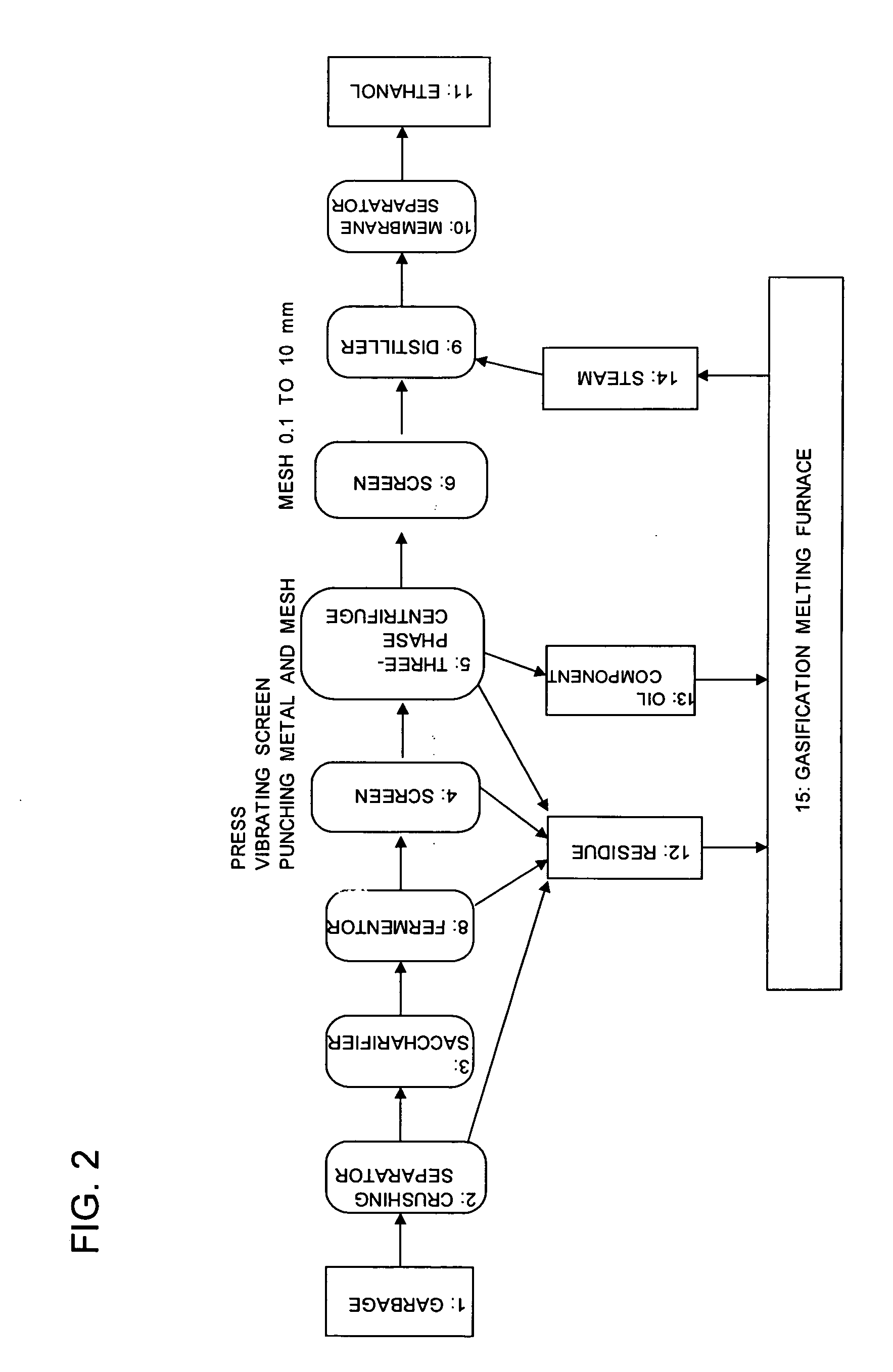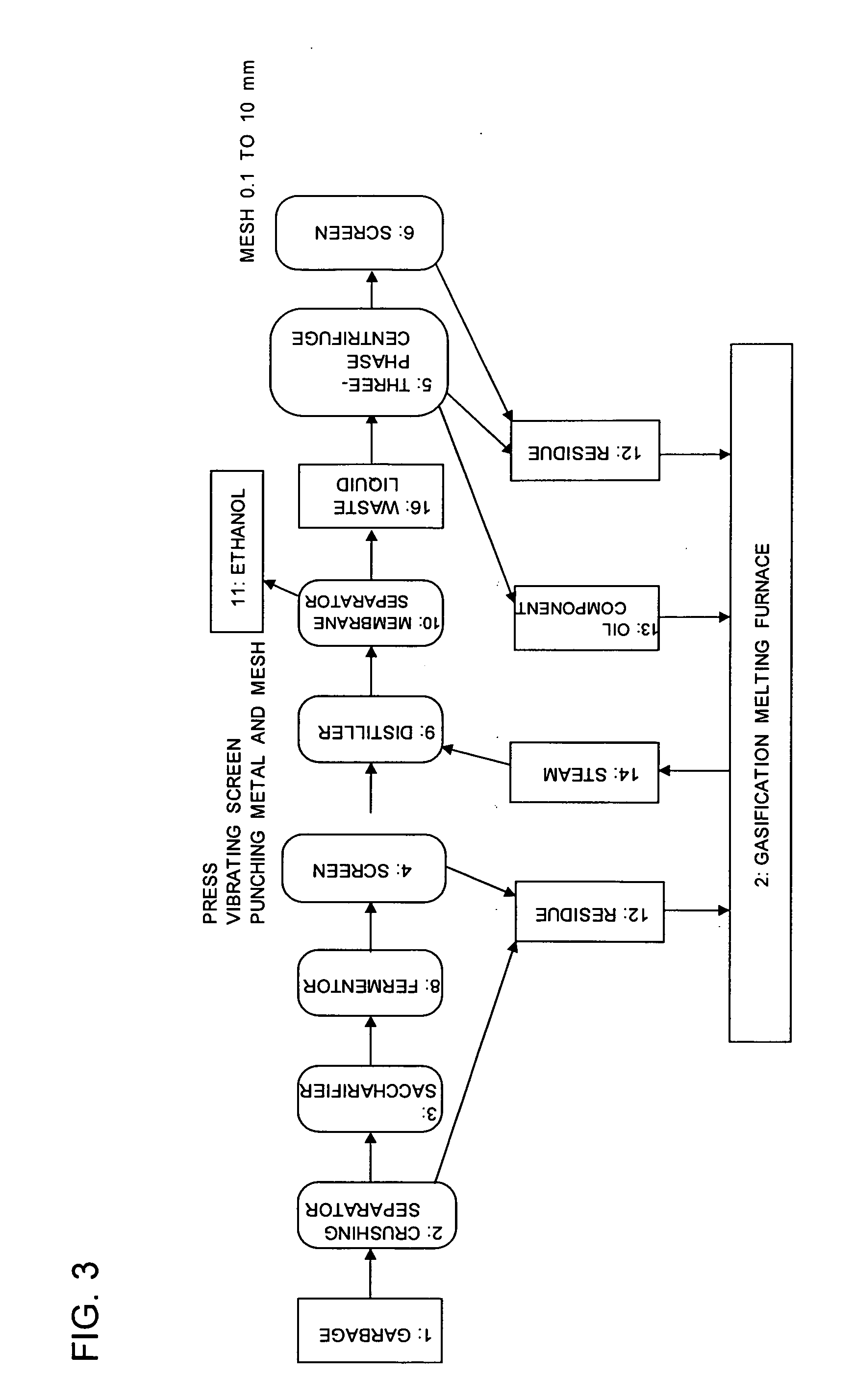Method for recovering and producing ethanol and oil
a technology of ethanol and oil, applied in the field of recovering and producing ethanol and oil, can solve the problems of reducing the heat recovery rate of starch contained in garbage, ejecting all materials other than sugar as residues, etc., and achieve the effect of high calorific value, low viscosity of oil and effective us
- Summary
- Abstract
- Description
- Claims
- Application Information
AI Technical Summary
Benefits of technology
Problems solved by technology
Method used
Image
Examples
first embodiment
[0065]FIG. 1 is a diagram exemplifying a method for producing ethanol according to a first embodiment of the invention.
[0066]First, a sample of the garbage 1 is crushed using the crushing separator 2. After removing a solid component as a residue 12 therefrom, the crushed garbage is kept in the saccharifier 3 at a temperature of about 60° C. with enzyme, such as glycol amylase, added thereto, so that starch is converted into glucose which is soluble in water.
[0067]Then, foreign substances, such as plastics, paper, bags, disposable chopsticks, metal, or crustaceans, are separated using a filter type press, a vibrating screen, a punching metal, and a mesh in the screen 4, and are removed as the residue 12. Then, the sample of the garbage is separated into three phases, namely, an oil component, an aqueous solution component, and a solid component, by the three-phase centrifuge 5 with the solid component removed therefrom as the residue 12. The separated oil component 13 can be used as...
second embodiment
[0080]FIG. 2 is a diagram exemplifying a method for producing ethanol according to a second embodiment of the invention.
[0081]In the second preferred embodiment, the screen 4, the three-phase centrifuge 5, and the screen 6 of the first embodiment are set between the fermentor 8 and the distiller 9. A part of the solid component is supplied to the fermentor 8, which can improve the efficiency of fermentation. Since the temperature of the saccharified liquid directly after the saccharifier 3 is equal to or more than 28° C. or more, the flexibility of the oil component can be enhanced, thus facilitating the separation and recovering of the oil.
[0082]The features of the screen 4, the screen 6, and the Brix meter (refractometer) are the same as those of the first embodiment.
third embodiment
[0083]FIG. 3 is a diagram exemplifying a method for producing ethanol according to a third embodiment of the invention.
[0084]In the third embodiment, the screen 4 of the first embodiment is disposed between the fermentor 8 and the distiller 9, and the three-phase centrifuge 5 and the screen 6 are disposed after the membrane separator 10, whereby a part of the solid component is supplied to the fermentor 8, the distiller 9, and the membrane separator 10 to enable improvement of the ethanol formation efficiency. Since the temperature of the saccharified liquid directly after the distiller 9 is equal to or more than 40° C. or more, the flexibility of the oil component can be enhanced, thus facilitating the separation and recovery of the oil.
[0085]The features of the screen 4, the screen 6, and the Brix meter (refractometer) are the same as those of the first embodiment.
PUM
| Property | Measurement | Unit |
|---|---|---|
| temperature | aaaaa | aaaaa |
| concentration | aaaaa | aaaaa |
| size | aaaaa | aaaaa |
Abstract
Description
Claims
Application Information
 Login to View More
Login to View More - R&D
- Intellectual Property
- Life Sciences
- Materials
- Tech Scout
- Unparalleled Data Quality
- Higher Quality Content
- 60% Fewer Hallucinations
Browse by: Latest US Patents, China's latest patents, Technical Efficacy Thesaurus, Application Domain, Technology Topic, Popular Technical Reports.
© 2025 PatSnap. All rights reserved.Legal|Privacy policy|Modern Slavery Act Transparency Statement|Sitemap|About US| Contact US: help@patsnap.com



